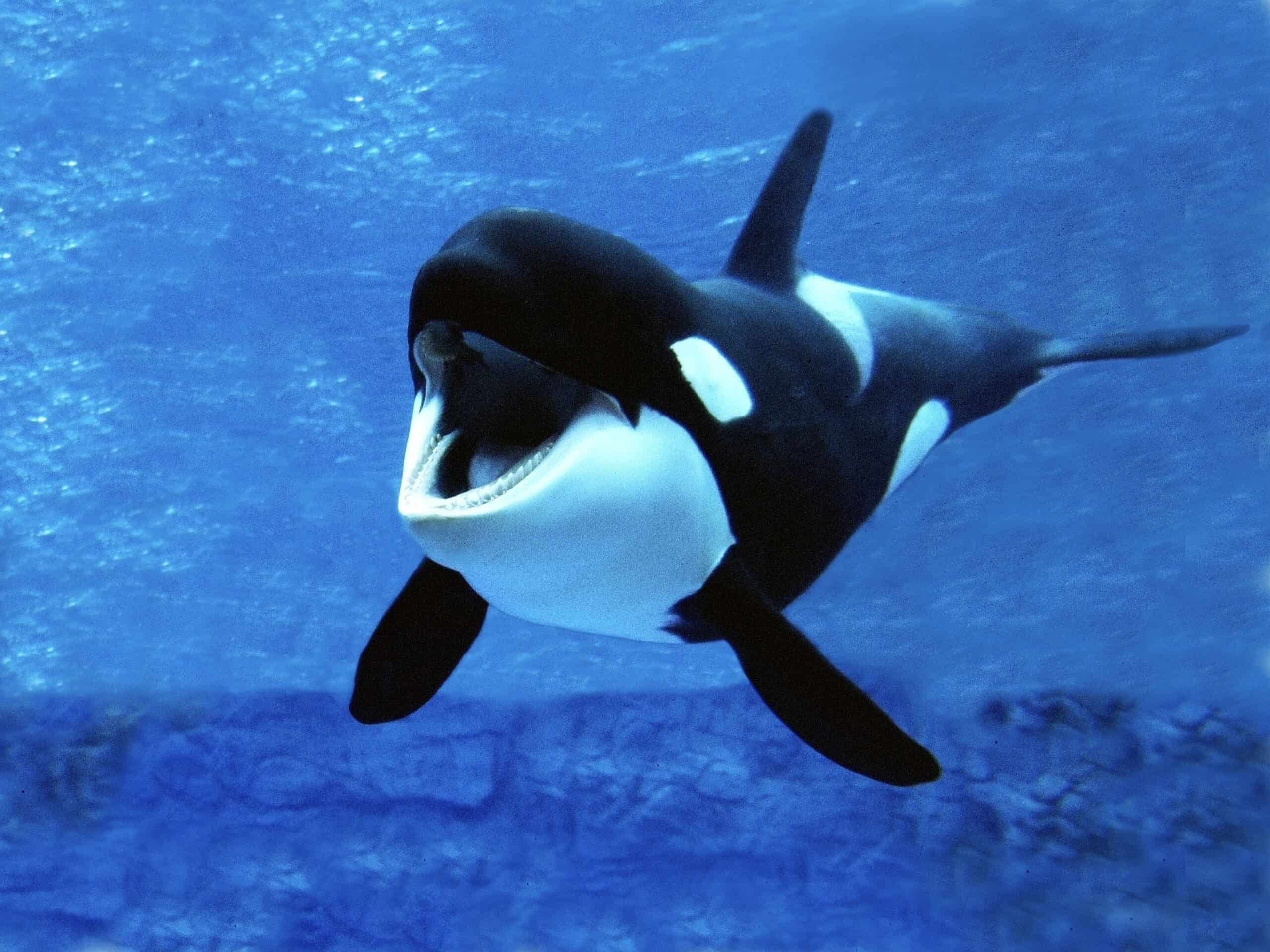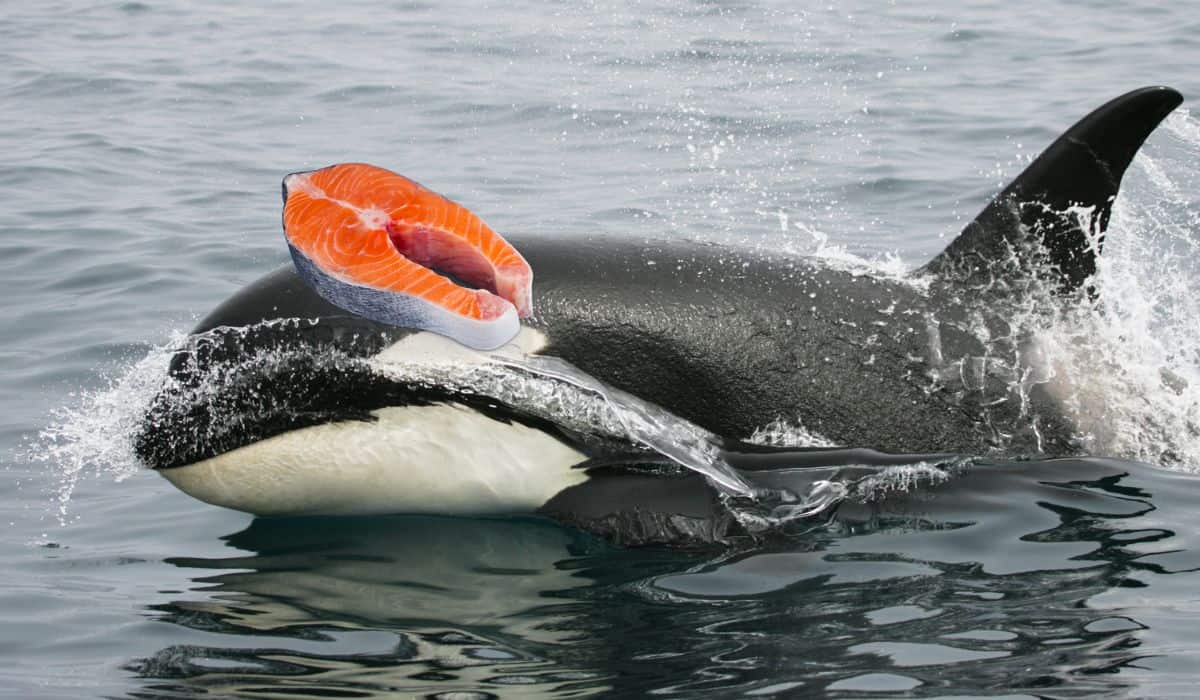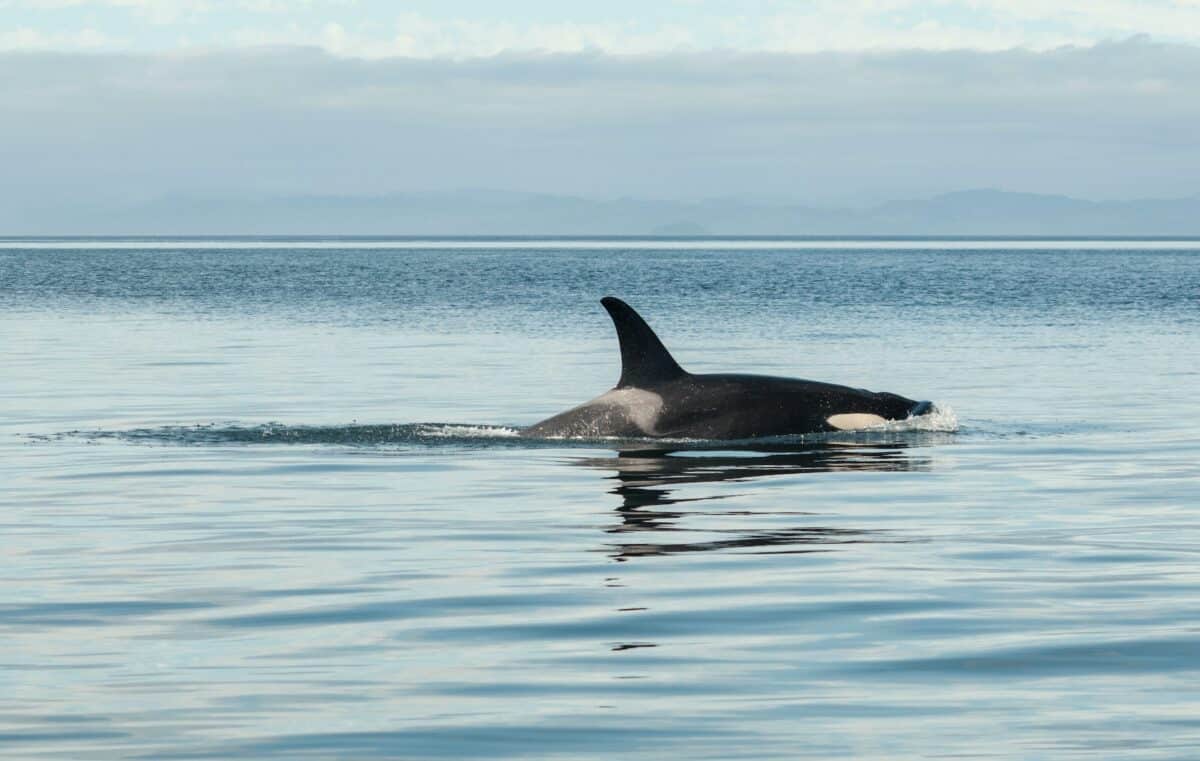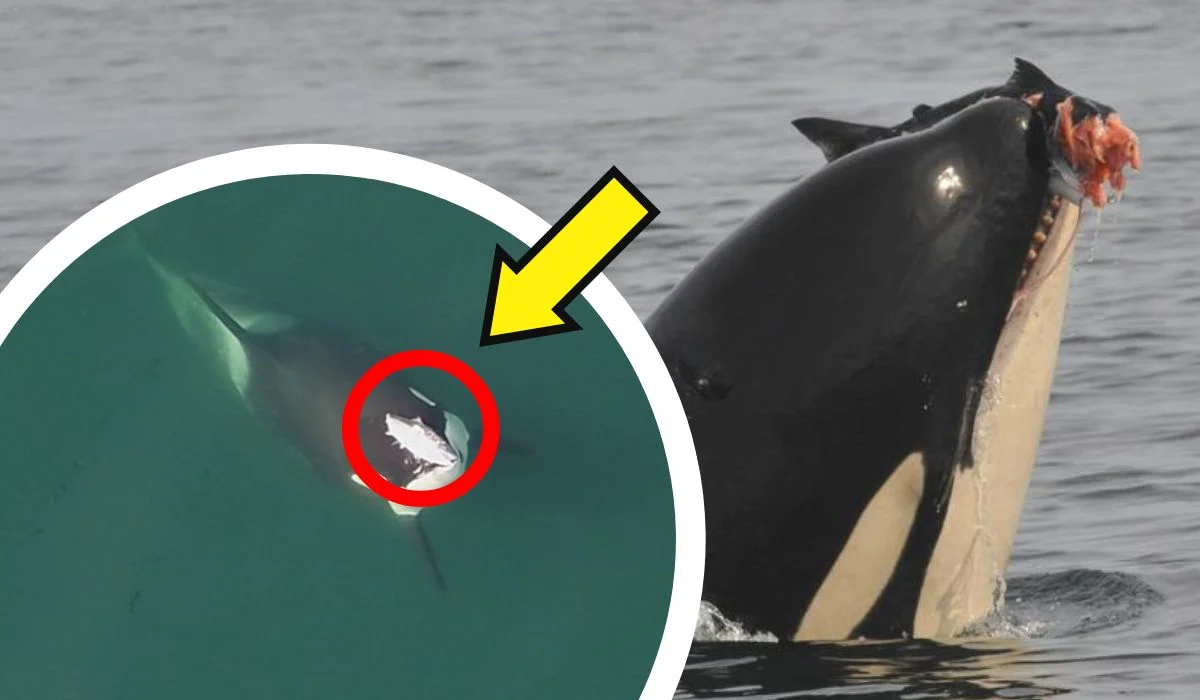In the 80s, Orcas adopted a fishy fashion trend – they started wearing salmon as hats.

With the sophisticated social structures and intricate behaviors of Orcas, these marine mammals often exhibit an uncanny resemblance to our own species.
Much like humans, orcas participate in cultural phenomena that sweep through their communities, mirroring the collective behaviors we often associate with our societal trends. One of the most bewildering of these is the renowned “salmon-hat” trend that made waves during the summer of ’87.
This article will take you on a deep dive into the fascinating world of orca behavior, exploring this fishy fashion fad.
From displaying unique personalities to exhibiting empathy, join us as we traverse the intriguing parallels that bridge the oceanic world of orcas and our own human societies.
Key Points
- In 1987, a fad took hold among orcas where they began sporting dead salmon atop their heads, quickly becoming popular across various groups.
- The “salmon hat” behavior doesn’t seem to offer any practical benefits, leaving researchers perplexed.
- The trend, first observed during the summer 1987, lasted approximately 5-6 weeks.
- The trend suddenly came to a halt and has since sporadically recurred in subsequent years.
- Orcas reflect the intelligence equivalent to that of a 15-year-old human, including exhibiting distinct personalities.
- A new orca trend involves interactions with boats—bumping hulls and damaging rudders—with theories attributing it to playfulness or defensive aggression.
Orcas Wearing Salmon Hats: The Trend

In the fascinating world of marine biology, a peculiar trend emerged in 1987, marking a quirky behavioral trait in orca whales. This trend, now known as the “salmon hat” fad, began when a few trendsetting orcas off the coast of Washington were noticed wearing (or perhaps displaying is a more accurate term) dead salmon on their heads.
Despite its inexplicable nature, this behavior quickly propagated amongst various orca pods. It spread much like human cultural trends—starting with a handful of individuals and rapidly going viral.
The “salmon hat” trend was first observed in a female killer whale in Puget Sound, United States. According to documentation, she was wearing a dead salmon on her nose. In a curious domino effect, other orcas began replicating this behavior, including those from the initial pod, as well as two other separate pods.
What Made the Salmon Hats So Fashionable?
The reason behind this behavior remains shrouded in mystery. Researchers are at a loss to explain why these intelligent aquatic mammals would carry salmon on their heads, as it does not seem to offer any practical benefits.
One possible explanation is that it represents a form of playful behavior, albeit a rather macabre one. This echoes their observed pattern of playing with live seals before leaving them to die, and not consuming them thereafter. The resurfacing of this behavior in 2022 by an orca named Alder further validates the idea of this trend as a playful act, reinforcing the notion of orcas as creatures capable of culture and trendsetting behavior.
How Long Did It Last?
The original trend of Orcas wearing salmon hats occurred in the summer of ’87 and lasted roughly 5-6 weeks. During this time, there were numerous and widespread sightings of this fishy fashion. Then, the trend came to a sudden halt. It disappeared almost as inexplicably as it had started. After all, the one thing that all trends have in common, human or marine, is that they inevitably fade away.
However, in the years since, the trend has shown a curious pattern of occurrence. The trend resurfaced the following summer, although only in isolated cases. For several decades, no such instances were recorded, leading researchers to believe that the fad had completely phased out. However, it unexpectedly made a comeback in 2022.
Thus, while the trend’s high-frequency phase was rather short-lived, the sporadic nature of its recurrence suggests that it endured, although intermittently, for an extended period, spanning multiple decades.
Similarities in Behavior Between Orcas and Humans

Orcas, or killer whales, have the second largest brain amongst all marine mammals. Their brains can weigh as much as 15 pounds.
Although a big brain doesn’t necessarily imply intelligence, this is the case for these brainy ocean residents. According to research, the IQ of an Orca is roughly the same as that of a 15-year-old human!
Their intricate social behaviors is undoubtedly a reflection of their high intelligence. In fact, the social behaviors of Orcas are really similar to humans, in more ways than you might think. The trend of Orcas wearing salmon as hats could easily be compared to the trend of shoulder pads, that we humans vigorously adopted during the 80s.
Here are some ways in which orcas mirror human behavior (or perhaps it’s the other way around?):
#1 Distinct Personalities
One compelling similarity between the two species is the observed diversity of personalities. Just as humans have unique personalities, research has shown that individual orcas also exhibit distinct personalities. Traits like boldness, playfulness, and curiosity vary across individuals, much like they do in humans. This diversity contributes to the dynamics within a pod, influencing behavior and relationships, similar to the role of individual personalities in shaping human societies.
#2 Team Work Makes the Dream Work
Both species show evidence of cooperative behavior. Orcas are known for their collaborative hunting strategies, which parallel human practices of teamwork and cooperation. Moreover, both species practice teaching and learning behaviors, passing down knowledge and skills across generations.
#3 A Problem Shared Is a Problem Halved
Interestingly, both orcas and humans exhibit empathy, a trait seldom found in the animal kingdom. For instance, orcas have been observed supporting sick pod members, akin to human compassion for the ill. This capacity for empathy further underscores the intriguing social parallels between humans and orcas.
The Current Orca-Trend

Recently, a new behavioral trend has emerged among orcas, involving direct interactions with boats. This behavior has bewildered researchers and seafarers alike. Orcas have been spotted exhibiting behaviors such as bumping into hulls, damaging rudders, and even reportedly lifting vessels out of the water. The intensity of these encounters has been escalating, causing concern and sparking debates about the reasons behind this newfound tendency.
There are currently several theories going around to explain this behavior. Some researchers propose that it’s a form of playful interaction, akin to the observed “salmon hat” trend. Orcas, known for their playful nature, may perceive boats as novel playthings, akin to the way cats play with toys.
However, an alternative theory suggests that stress or agitation could drive this behavior. In turn, this could be due to increased boat traffic or changes in their environment. These theories interpret the many reported boat attacks as a form of defensive aggression.
Orcas Weating Salmon as Hats: Wrapping Up
In the ever-surprising narrative of orca behavior, the salmon-hat trend serves as a charmingly peculiar emblem of the similarities between these marine creatures and us. The exact reasoning behind orcas wearing salmon as hats remains a mystery, much like the elusive motivations that drive our own fashion fads.
In the heart of these parallel mysteries, we find a deeper connection that underscores the striking similarities between orca behavior and our own. Their ability to create and follow trends, exhibit distinct personalities, cooperate, teach, learn, and even empathize mirrors our own human complexities in uncanny ways.
In essence, the salmon hat serves as a curious reminder that we, humans and orcas, are just inhabitants on the same planet, caught in the shared tide of trends and traditions.
Thank you for reading this article about orcas wearing salmon as hats! Dive further into our marine content:
- Diver Narrowly Escaped Decapitation by Great White Shark
- Whale Scoops Up Woman and Saves Her From Huge Tiger Shark
- Surfers Share Wave with Great White Shark at Surfing Competition
- Magpie Bird Is Reunited with Her Dog Best Friend - April 24, 2024
- Dog Saves Another Dog From Drowning in Fish Pond - April 23, 2024
- Man On Motorbike Rescues Cat From Highway - April 23, 2024

